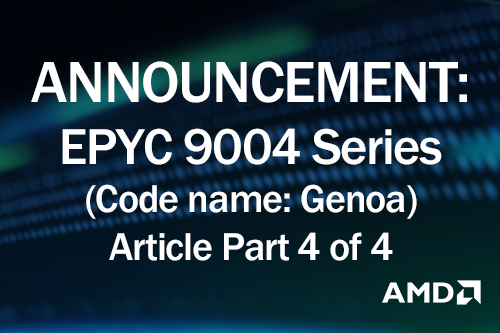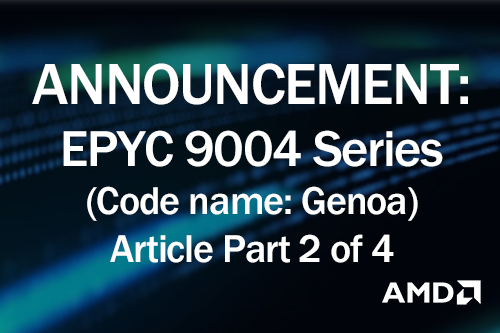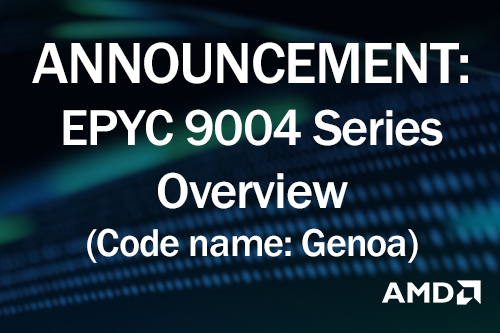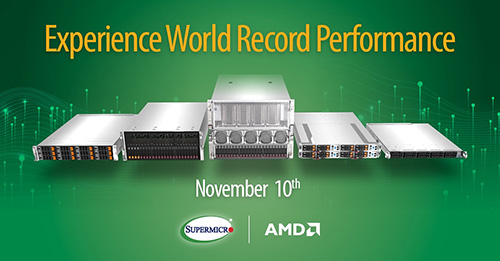Featured Content
Supermicro Debuts New H13 Server Solutions Using AMD’s 4th-Gen EPYC™ CPUs
- November 16, 2022
- Author: David Strom
Last week, Supermicro announced its new H13 A+ server solutions, featuring the latest fourth-generation AMD EPYC™ processors.
How the New EPYC CPUs Deliver System-on-Chip Electronics
- November 15, 2022
- Author: David Strom
CPU chipsets are not normally considered systems-on-chip (SoC) but the fourth generation of AMD EPYC processors incorporate numerous I/O functionality at a high level of integration.
AMD’s Infinity Guard Selected by Google Cloud for Confidential Computing
- November 13, 2022
- Author: David Strom
Google Cloud has been working over the past several years with AMD on developing new on-chip security protocols. More on the release of the AMD EPYC™ 9004 series processors in this part three of a four-part series..
Understanding the New Core Architecture of the AMD EPYC 9004 Series Processors
- November 13, 2022
- Author: David Strom
AMD’s announcement of its fourth generation EPYC 9004 Series processors includes major advances in how these chipsets are designed and produced. Part 2 of 4.
AMD Announces Fourth-Generation EPYC™ CPUs with the 9004 Series Processors
- November 11, 2022
- Author: David Strom
AMD announces its fourth-generation EPYC™ CPUs. The new EPYC 9004 Series processors demonstrate advances in hybrid, multi-die architecture by decoupling core and I/O processes. Part 1 of 4.
Unlocking the Value of the Cloud for Mid-size Enterprises
Organizations around the world are requiring new options for their next-generation computing environments. Mid-size organizations, in particular, are facing increasing pressure to deliver cost-effective, high-performance solutions within their hyperconverged infrastructures (HCI).
Enter Your Animation in Pixar’s RenderMan NASA Space Images Art Challenge
- November 1, 2022
- Author: David Strom
For the first time, challengers can run their designs using thousands of AMD EPYC™ core CPUs, enabling artists to develop the most complex animations and the most amazing visualizations. “The contestants have access to this professional-grade render farm just like the pros. It levels the playing field,” said James Knight, the director of entertainment for AMD. “You can make scenes that weren’t possible before on your own PC,” he said.
Register to Watch Supermicro's Sweeping A+ Launch Event on Nov. 10
Join Supermicro online Nov. 10th to watch the unveiling of the company’s new A+ systems -- featuring next-generation AMD EPYC™ processors. They can't tell us any more right now. But you can register for a link to the event by scrolling down and signing-up on this page.
- ‹ previous
- 16 of 19
- next ›












